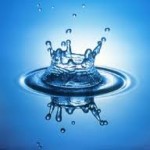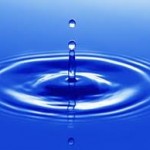 Better than Bleach: Use Calcium Hypochlorite to Disinfect Water
Better than Bleach: Use Calcium Hypochlorite to Disinfect Water
June 19th, 2010
This article was originally posted at Survival Topics
Many ourdoorsmen, survivalists, and households preparing for emergency disasters rely upon common household bleach as a disinfecting agent to make water safe to drink.
Bleach will destroy most (but NOT all!) disease causing organisms (boiling water to make it safe to drink is always the best method).
What is not well known is Calcium Hypochlorite is far better for chemically disinfecting water.
Old Way: Using Bleach to Disinfect Water
I cringe to think how many people have expired bleach in their disaster emergency kits that will be used for treating polluted water.
Those of us who have emergency preparedness stocks of survival food and survival gear often keep a gallon or two of unscented household bleach on hand for making safe drinking water in large quantities. Bleach is often the chemical of choice because it is commonly available and frequently mentioned when discussing the how-to’s of drinking water.
Typical fresh household chlorine bleach has about 5.35% chlorine content (be sure to read the label).
To use household bleach for disinfecting water:
- Add two drops of bleach per quart or liter of water.
- Stir it well.
- Let the mixture stand for a half hour before drinking.
If the water is cloudy with suspended particles:
- First filter the water as best you can.
- Double the amount of bleach you add to the water.
Why Using Bleach to Disinfect Contaminated Water is a Problem
A little known problem with long term storage of bleach in your disaster emergency supply cache is that it degrades over time. Consulting a Chlorox bleach representative produced this statement:
“We recommend storing our bleach at room temperatures. It can be stored for about 6 months at temperatures between 50 and 70 degrees Fahrenheit. After this time, bleach will be begin to degrade at a rate of 20% each year until totally degraded to salt and water. Storing at temperatures much higher than 70 degrees Fahrenheit could cause the bleach to lose its effectiveness and degrade more rapidly. However, if you require 6% sodium hypochlorite, you should change your supply every 3 months.”
I cringe to think how many people have expired bleach in their disaster emergency kits that will be used for treating polluted water. Even what are considered reliable sources of information such as the EPA and the Federal Emergency Management Agency FEMA will show you how to use bleach to disinfect water but will leave out this exceedingly important piece of information.
This is why I created Survival Topics – to give you the real information you need to survive.
So if bleach is unreliable for long term storage in emergency preparedness kits then what other commonly available chemical methods of disinfecting water are there? As it turns out a better solution is easily available.
Use Calcium Hypochlorite to Disinfect Water
A 1-pound pag of calcium hypochlorite in granular form will treat up to 10,000 gallons of drinking water
Calcium hypochlorite is one of the best chemical disinfectants for water, better than household bleach by far. It destroys a variety of disease causing organisms including bacteria, yeast, fungus, spores, and viruses. Calcium Hypochlorite when mixed with water becomes #Hypochlorous Acid.
Calcium Hypochlorite is widely available for use as swimming pool chlorine tablets or white powder that is much more stable than chlorine. This is often known as “pool shock”.
How to Disinfect Water Using Calcium Hypochlorite
Using granular calcium hypochlorite to disinfect water is a two step process.
- To make a stock of chlorine solution (do not drink this!) dissolve 1 heaping teaspoon (about one-quarter of an ounce) of high-test (78%) granular calcium hypochlorite for each two gallons (eight liters) of water.
- To disinfect water add one part of the chlorine solution to 100 parts water to be treated.
- Let the mixture sit for at least one-half hour before drinking.
Be sure to obtain the dry granular calcium hypochlorite since once it is made into a liquid solution it will begin to degrade and eventually become useless as a disinfecting agent. This also means you should make your treated drinking water in small batches, for example enough for a few weeks at a time at most.
Another plus for using calcium hypochlorite to disinfect water for emergency use is that a little goes a very long way. A 1-pound pag of calcium hypochlorite in granular form typically costs only a few US dollars and can be obtained in any swimming pool supply section of your hardware store or online. This amount will treat up to 10,000 gallons of drinking water, which is enough for a family of four for some six or seven years at a gallon per day per person!
Calcium hypochlorite will store for a long period of time and remain effective as a chemical drinking water treatment. So get rid of the household bleach and buy a bag of Calcium hypochlorite for your disaster emergency water disinfection needs. It lasts far longer and treats far more water than the traditional chlorine bleach water disinfection treatment. Back to top